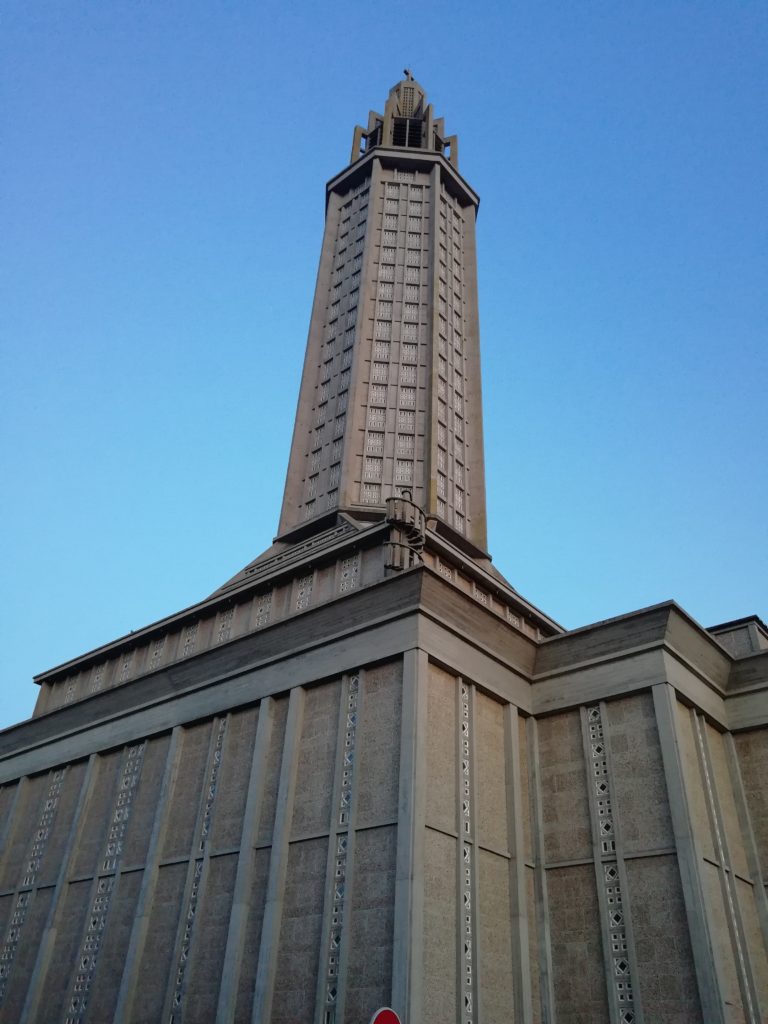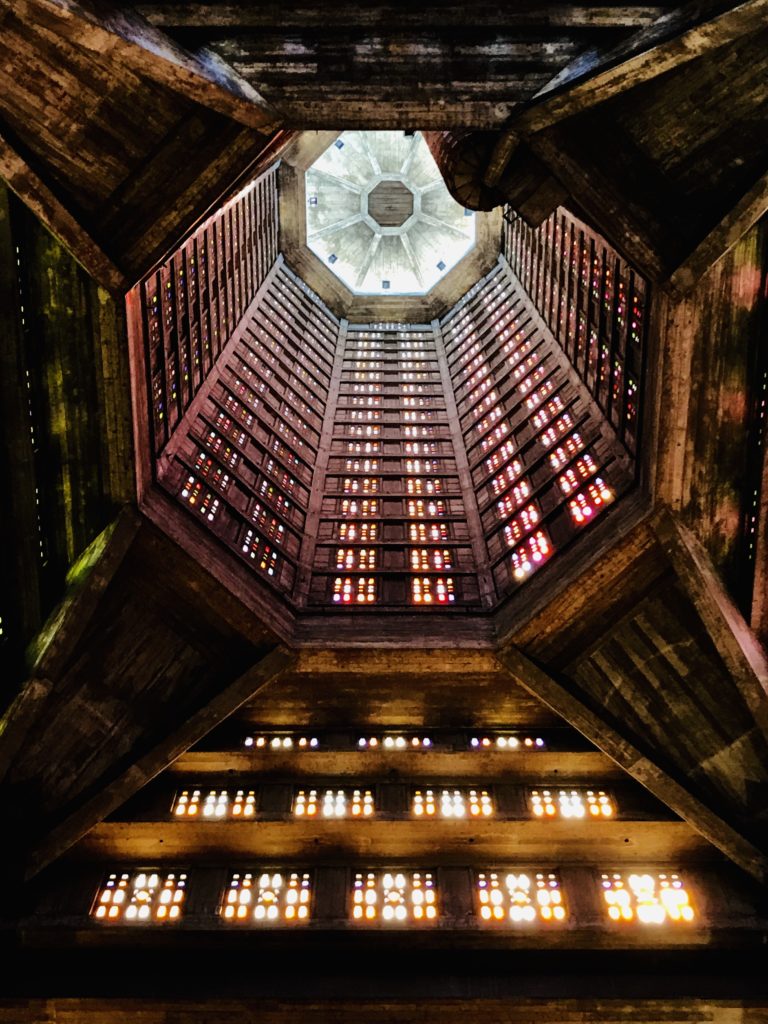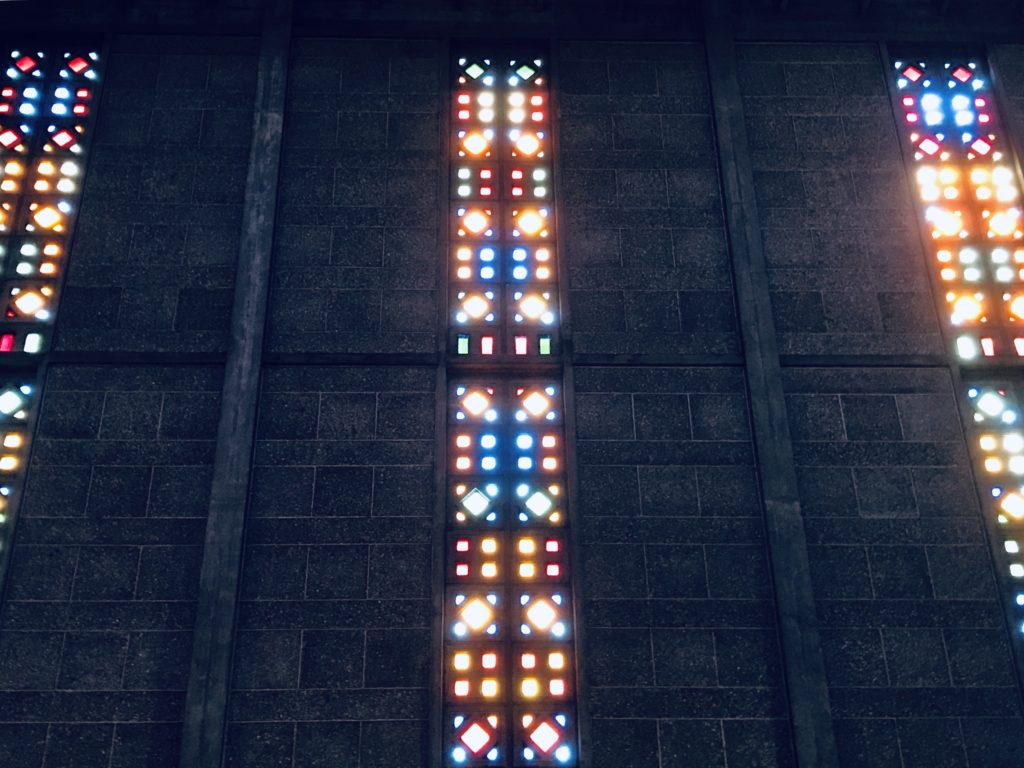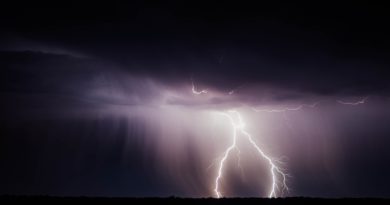Holy urban lighthouse by a Brussels-born architect
Anchored in the heart of the city of Le Havre, St. Joseph’s Church rises high above the cream-coloured roofscapes of a city rebuilt from the ashes of the Second World War. 107 meters of sculpted concrete, striving up – a landlocked lighthouse to guide lost souls.

Designed by Brussels-born architect, Auguste Perret, St. Joseph’s was completed in 1958, the fourth church on the spot. I hope that it stands forever. It offers a majestic calm to counter the infinite suffering of mankind’s greatest folly – war. This temple of the soul strives to quench the spilt blood, to offer an alternative. Itis an unforgettable castle of concrete, light, and sound.
For fans of concrete and those to be converted, St. Josephs is a masterpiece. On the outside, it is a sleek tower, elegant yet with a weighty permanence one can trust. It is a lighthouse that guides sea farers, Le Havre citizens and tourists alike. It is modern, futuristic even – the outside reminds me of the Sci-Fi weapons, the inside has the feel for a spaceship, momentarily at least, for the light and sound transport us to different celestial reflections.

The light – transformed by the glassworks of French artist Marguerite Huré – creates mosaics of red, gold, green, blue and lilac glass squares, triangles, and rectangles that rise up the walls, up, up, up the tower – in columns, in rows, in squares that puncture and punctuate the thick concrete walls, turning sunlight into shafts of colour that pierce the air, warm the rock and marble, and light up the upturned faces.
Red speaks of the blood of martyrs, the light lilacs of gloom and death, the pinker lilacs, the gold and green give hope, symbolising the nativity. Blue symbolises the heavens. And the orange and gold exalt the power of the spirit. Pathos for the past mixed with hope.
There is also a language in the form and orientation of the glass. The vertical rectangles of glass represent humankind’s aspirations for the celestial heavens. The squares that stand on their sides talk of the stability of perfection. Those balanced on their corners symbolise the exchange between the earth and the sky; the downward tips of these diamonds speak of Grace coming from heaven and the upward tips of the rise of our souls. They guide us up the colour-lit towers.

Churches can be quiet tombs, but St. Joseph is alive. The air inside vibrates with a music that stops all in our tracks, transports us to a timeless place, a place of wonder, of awe. No one talks, daily concerns evaporate; we float in the music, let it inhabit us, free us. They say that music is soul and the breathing organ pipe carries the breath of the Scottish sound sculptor Susan Philipsz, transformed so that spiritual fog horns fill the air. It is eerie, mesmerising, uplifting.
Concrete can be cold, but with the light, with the music, it becomes majestic, magic. Whether you are religious or not, go to Le Havre, see the beautiful creation of concrete, light and sound that offers a memory of, and alternative to, the history of death.
St. Georges is a local heritage wonder and World Heritage site, and deservedly so, reflecting mankind’s creative genius – a French glassworks artiste, a Scottish sound sculptor and an architect born in Brussels – collaborating to create this Holy Urban Lighthouse.



